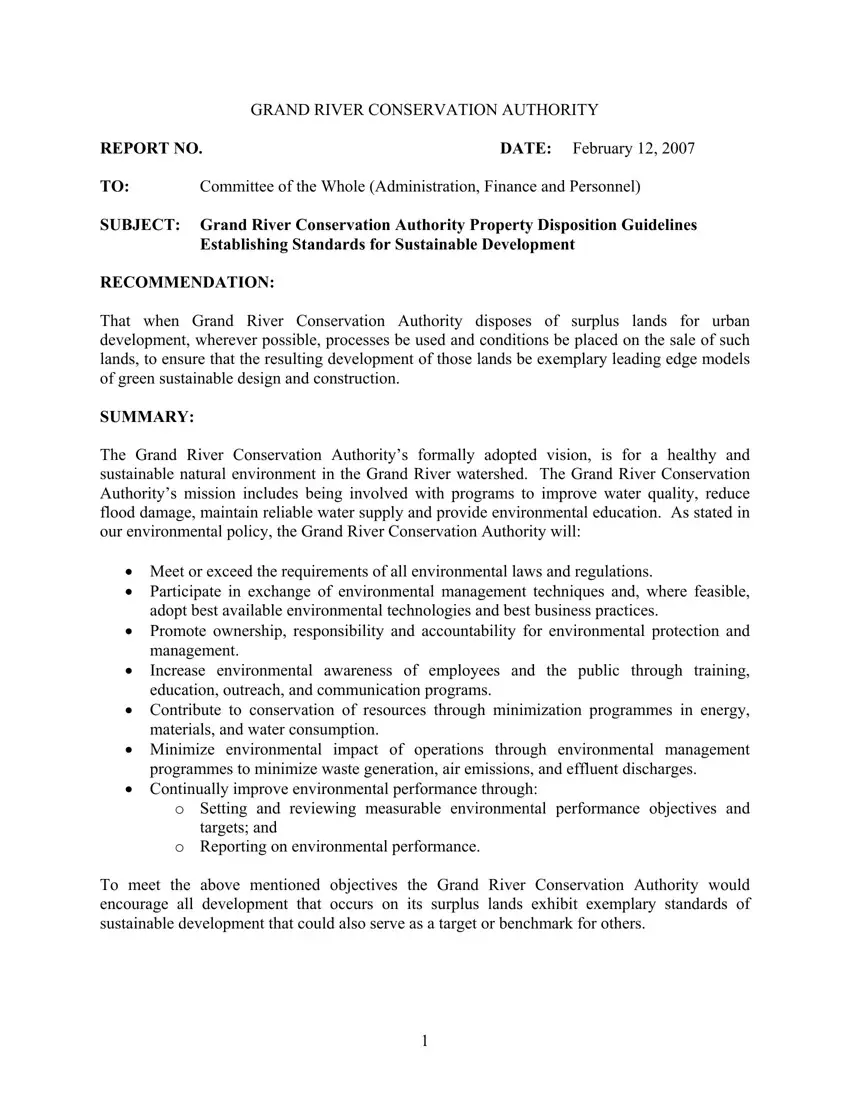REPORT:
The Grand River Conservation Authority owns approximately 50,000 acres of land in the Grand River watershed. From time to time small parcels of these lands which do not perform a significant environmental, educational or recreational purpose may be considered surplus to the needs of the organization.
Revenue from the disposition of surplus Grand River Conservation Authority lands must be placed in a special reserve fund, which is only available for Capital Projects that meet the criteria set out by the “Policies and Procedures for the Treatment of Conservation Authority Generated Revenue” (MNR, June 1997). These reserve funds are generally used for land acquisitions that meet the goals of the Grand River Conservation Authority’s approved land acquisition policy.
Municipalities in the watershed are at various stages in the move toward implementation of sustainable development policies. As an environmental agency with the aforementioned policies, it is imperative that the Grand River Conservation Authority ensure that it promotes environmental responsibility to its utmost ability.
As an agency that also has regulatory responsibilities, we need to lead by example, if we are to credibly encourage positive change in the behaviour and practices of others, when it comes to the form and function of urban growth.
There are disposition methods available that will allow us to ensure minimum property development standards for the planning and development of surplus property. We can ensure, through the use of “expressions of interest” and “requests for proposals”, (with specific conditions), that only those organizations willing and able to design and build to these standards have the opportunity to acquire our surplus lands.
The “Policies and Procedures for Disposition of Conservation Authority Property” (MNR, June 1997) require that open and transparent disposition processes be utilized.
Some of the environmental technologies that a developer may propose in response to a Request For Proposal could include:
•Opportunities for district / alternate energy systems.
•Solar orientation, passive and active solar systems, wind, vegetation and landform techniques.
•Ground source heating on an individual or communal scale.
•“Leed Certified” Buildings.
•Rainwater and grey water recycling systems.
•Planting Programmes.
•Minimize impervious surfaces.
•Leading edge storm water techniques.
•Meeting or exceeding the 2012 building code standards for energy efficiency starting now.
•Emissions reductions – “0” footprint.


